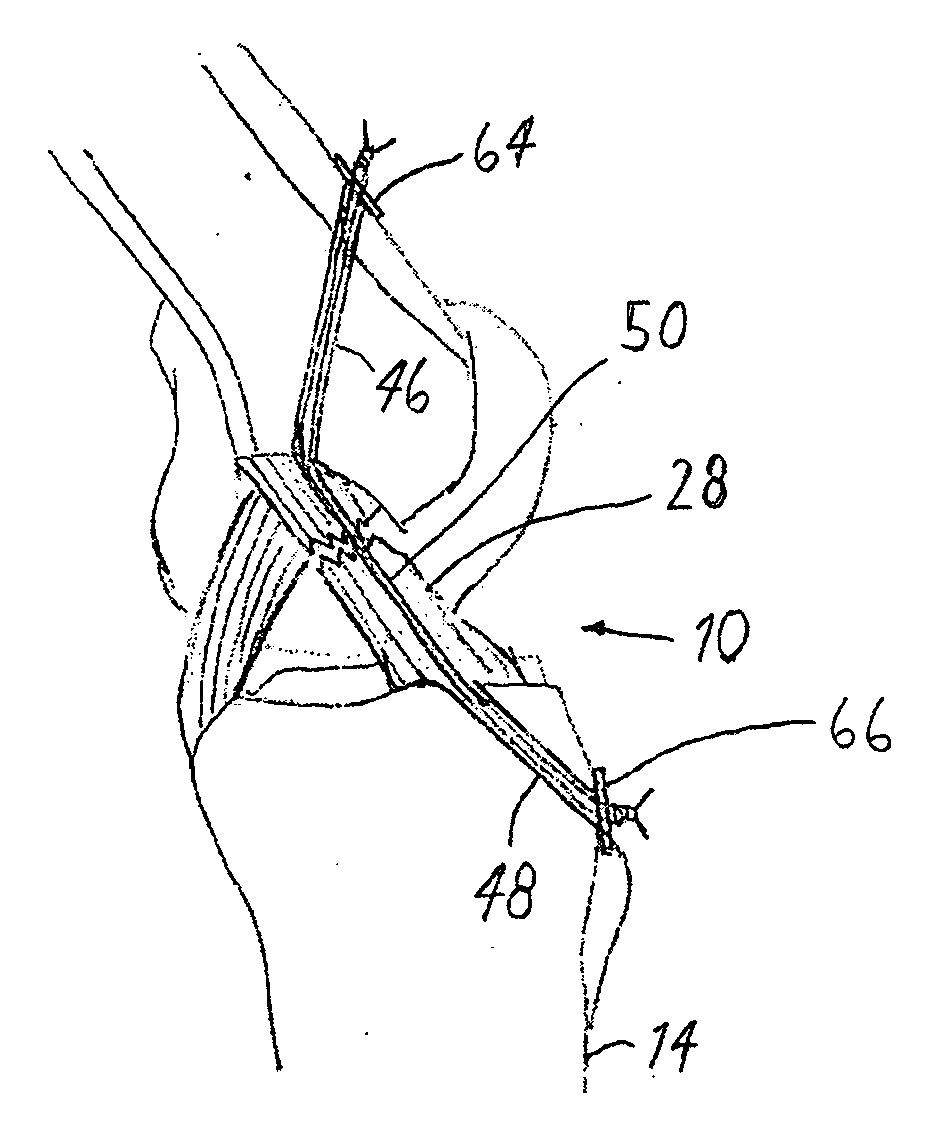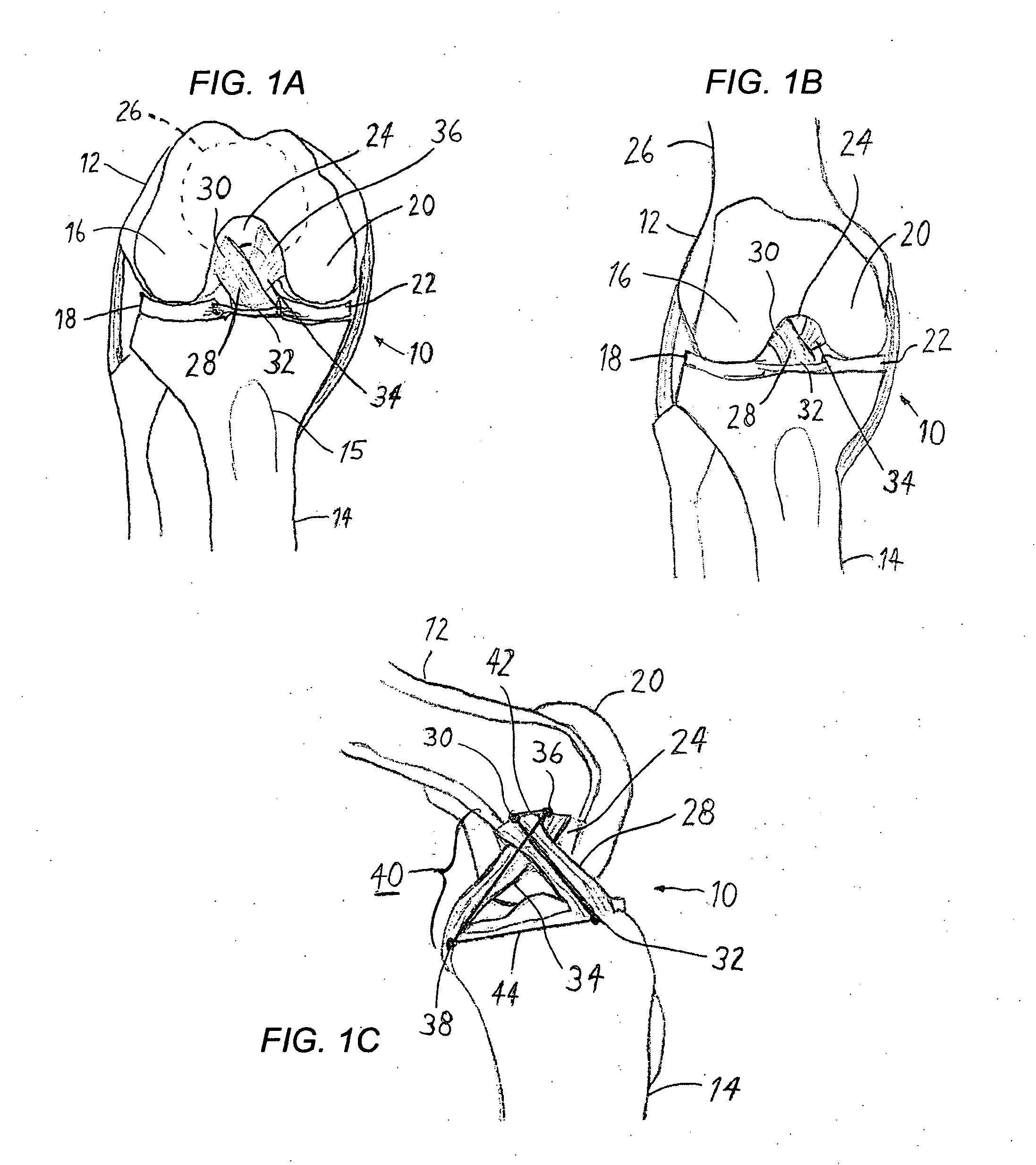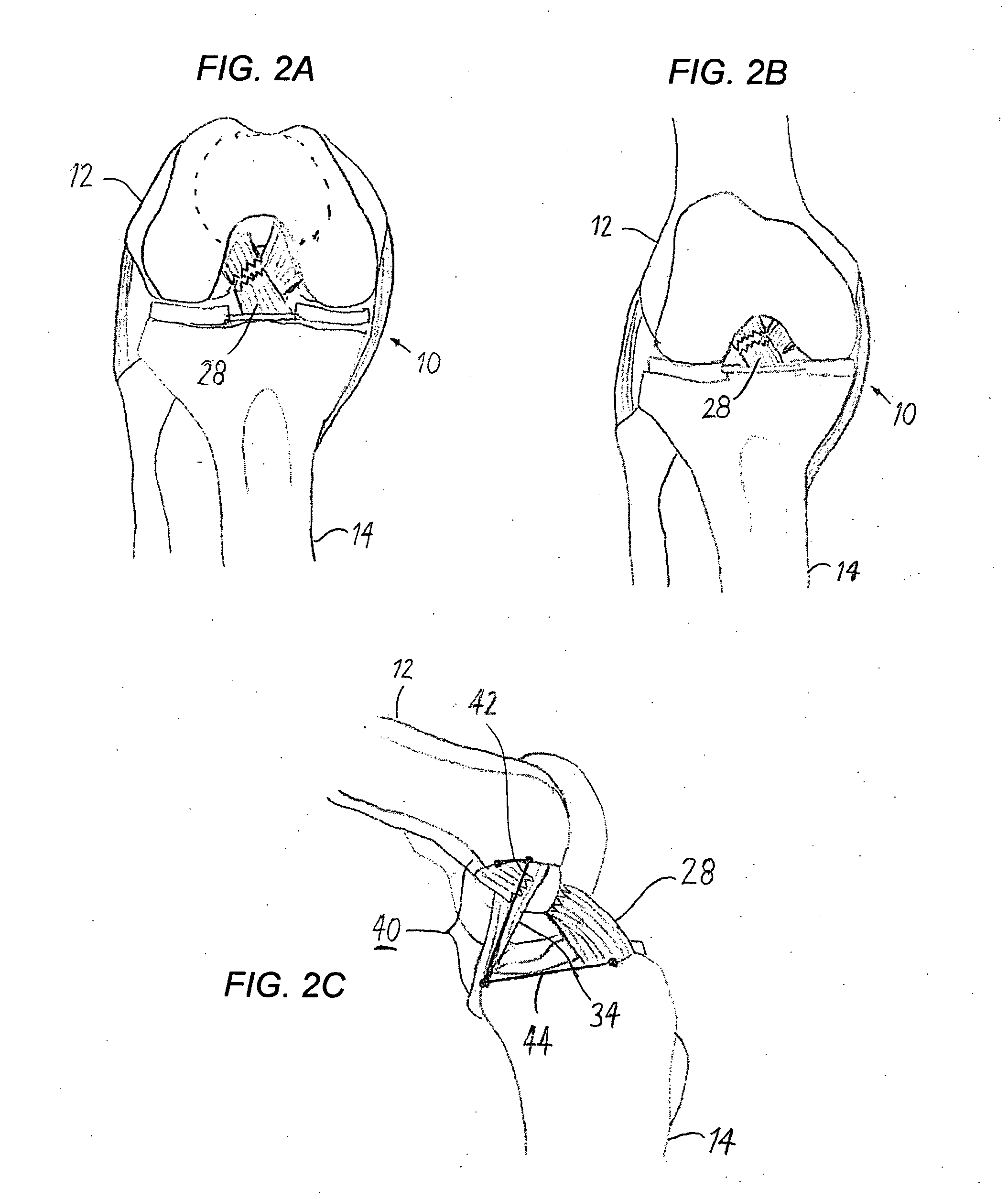Anterior cruciate ligament tether
a technology of anterior cruciate ligaments and tethers, which is applied in the field of anterior cruciate ligament injury and repair, can solve the problems of graft site morbidity, not a particularly rewarding strategy, and the association of natural history of acl-deficient knees
- Summary
- Abstract
- Description
- Claims
- Application Information
AI Technical Summary
Benefits of technology
Problems solved by technology
Method used
Image
Examples
Embodiment Construction
[0082]FIG. 5 is a side view of a portion of right knee joint 10, in the plane of anterior cruciate ligament 28, partly in section with part of lateral condyle of femur 12 removed along with all the external ligaments and the patella. An alternative embodiment of the anterior cruciate ligament tether involves employing any type of suture anchor as part of femoral fixation or tibial fixation. For example, anchor may be of the type disclosed in U.S. Pat. No. 5,370,662, which has a self-drilling, tapping leading end and a trailing end of suture. Through an arthroscopic portal, femoral suture anchor 68 is inserted directly into ACL femoral attachment site 30. Similarly, through another arthroscopic portal, tibial suture anchor 69 is inserted directly into the ACL tibial attachment site 32. With knee joint 10 in thirty degrees of flexion and a rearward-directed force applied to the tibia 14, the suture from femoral anchor 68 is secured to the suture from tibial anchor 69 using standard ar...
PUM
 Login to View More
Login to View More Abstract
Description
Claims
Application Information
 Login to View More
Login to View More - R&D
- Intellectual Property
- Life Sciences
- Materials
- Tech Scout
- Unparalleled Data Quality
- Higher Quality Content
- 60% Fewer Hallucinations
Browse by: Latest US Patents, China's latest patents, Technical Efficacy Thesaurus, Application Domain, Technology Topic, Popular Technical Reports.
© 2025 PatSnap. All rights reserved.Legal|Privacy policy|Modern Slavery Act Transparency Statement|Sitemap|About US| Contact US: help@patsnap.com



